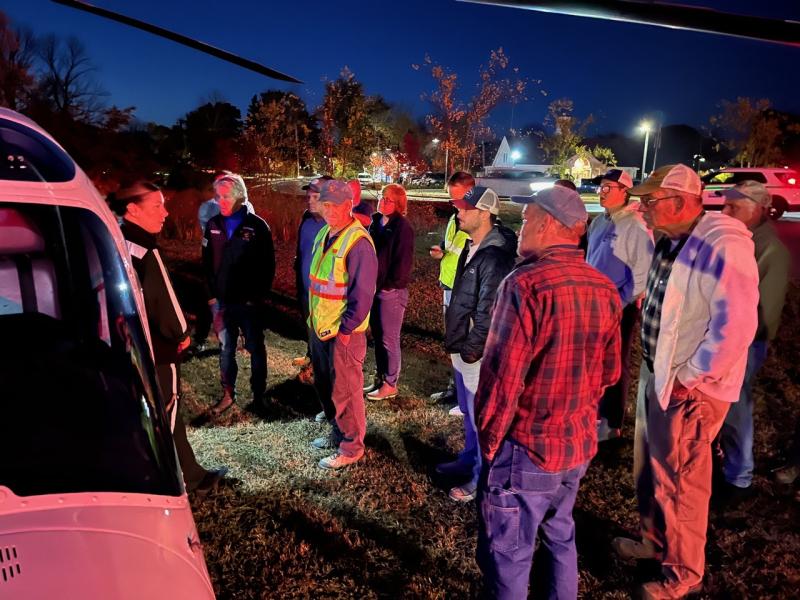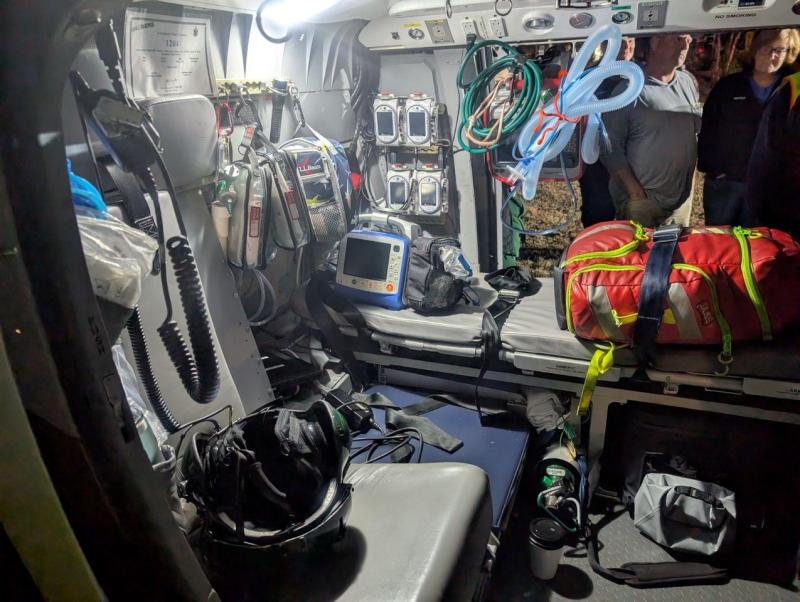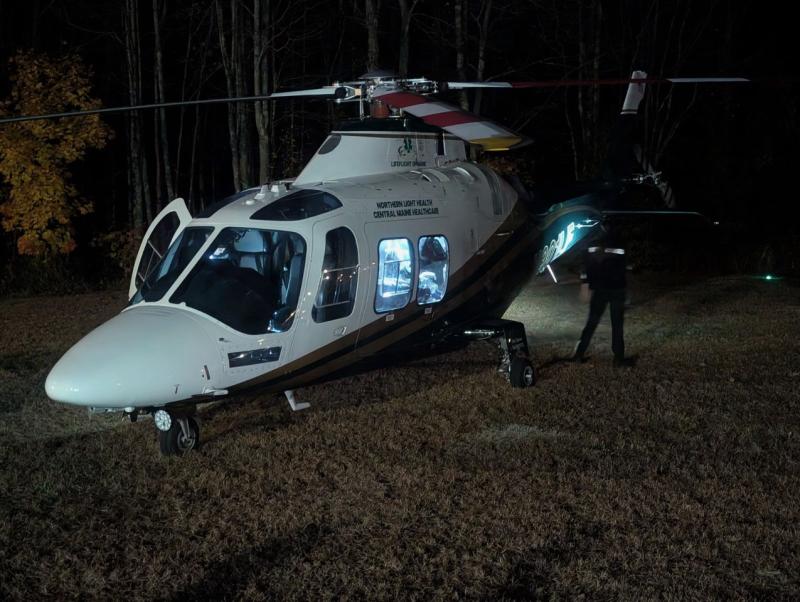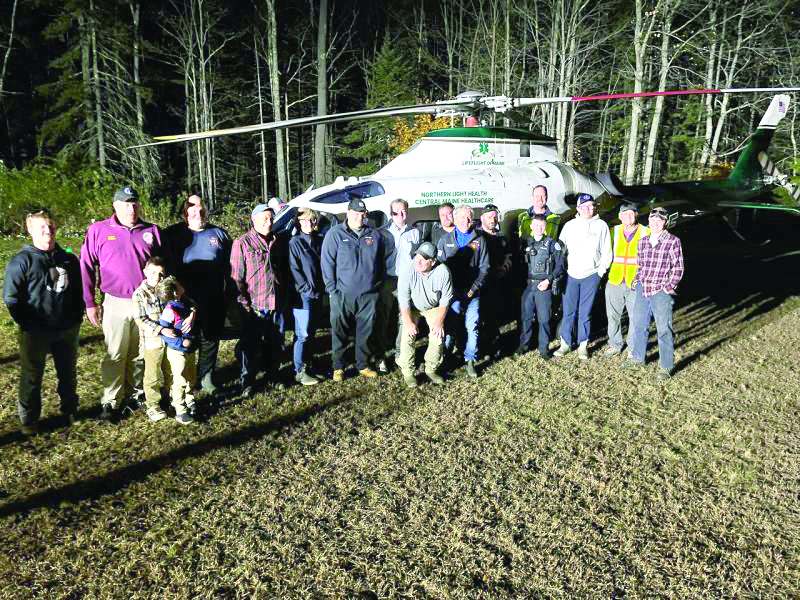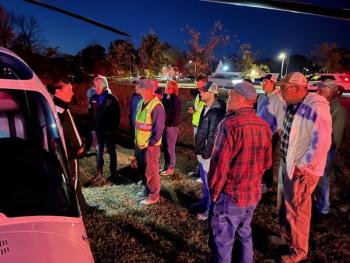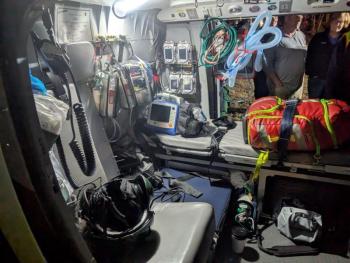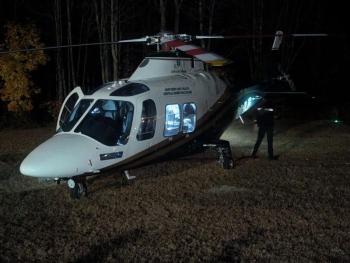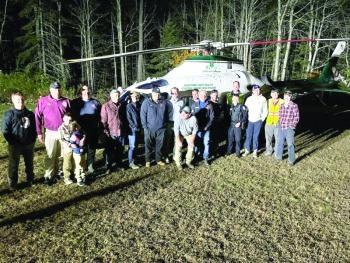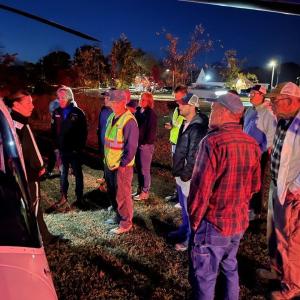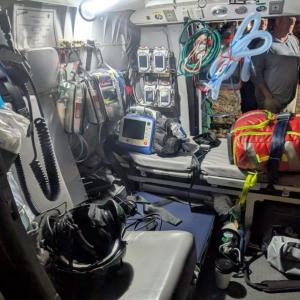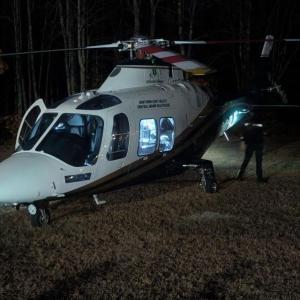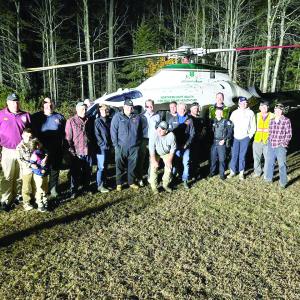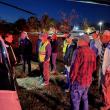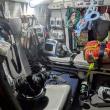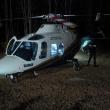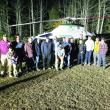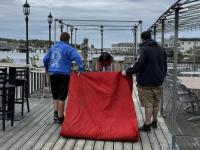LifeFlight conducts training course for area first responders
Have you ever looked up and wondered what that green and white helicopter was, what it was doing and why it occasionally lands at Boothbay Region High School field? It’s a LifeFlight of Maine Helicopter, delivering ICU-level critical care with a highly skilled crew equipped with state-of-the-art medical equipment, which they bring to their patients with the speed of a helicopter, airplane, or ground ambulance.
LifeFlight gives people in Maine facing critical illness or injury their best chance on their worst day. Since the inception of LifeFlight of Maine in 1998, 40,000 patients have been transported safely. On average, LifeFlight transports an acutely ill or injured person every 3.5 hours, every day and night of the year.
For many patients, minutes make all the difference. The care that a patient gets in the first 60 minutes after a heart attack, stroke, car accident, or other medical emergency will likely determine the outcome. Whether the call comes from a rural hospital or a first responder on scene, LifeFlight operates 24/7, 365 days a year.
When a person is seriously ill or injured and requires critical care, the incident triggers a complex yet highly orchestrated and integrated series of events with local first responders. For example, with a serious motor vehicle accident, a fire department will take primary responsibility for the extrication of the patient, EMS will provide on scene patient care and then transport the patient to the local landing zone, where the fire department will establish a dedicated landing zone for LifeFlight to land and pick up the patient. Life Flight critical care paramedics and nurses provide inflight, ICU caliber treatment of the patient all the way to the hospital. Efficiency and safe execution of this complex series of events is of paramount importance, and ongoing training is essential.
On Oct. 22 Kyle Madigan from LifeFlight conducted a First Responders training course on the requirements and techniques for safely establishing a landing zone with firefighters from Boothbay, Boothbay Harbor and Southport Fire and Rescue, along with the Boothbay Region Ambulance Service. The course, attended by 31 first responders, was held at the Boothbay Region Ambulance facility, and included two hours of classroom training followed by a LifeFlight helicopter landing and review of the helicopter and key medical capabilities. Key topics covered in the course included the following:
-
When to call LifeFlight
-
How to access the LifeFlight system
-
Information needed by LifeFlight
-
How to create a safe LZ from scratch
-
Communications and coordination
-
Patient packaging
-
Operating around the helicopter
-
Emergency operations for an aircraft incident
Pilot Karl Hatlemark, Flight Paramedic Jessical Dorgai and Flight Nurse Casey Farrar demonstrated to the first responders the ICU type medical equipment of the helicopter, which included invasive cardiac and neuromonitoring, airway management, multimode ventilators, multiple infusion pumps with a hospital pharmacy, bedside laboratory, ultrasound, blood, plasma, and a full complement of specialty resuscitation equipment to manage each patient, regardless of age or medical issue.
Flight Nurses and paramedics are required to have years of specialty experience in hospital critical care units and have an expanded scope of practice that allows all of the initial care in a trauma center hospital emergency department to be delivered directly at the scene.
Kyle Madigan noted “Having the opportunity to come out and interact with our public safety partners through our Ground Safety Course is invaluable to LifeFlight. We rely on these individuals to not only request our services, but then to establish a safe landing zone, communicate with our pilots, and assist with packaging the patient for transport by the LifeFlight helicopter."
“In working with local public safety agencies such as Fire Departments, EMS agencies and Law Enforcement, LifeFlight of Maine has developed a very robust data set of pre designated landing zones which have been determined to be a safe place to land the helicopters. This in turn, increases the efficiency of getting LifeFlight of Maine to respond to the event, while also improving safety for all involved. Partnerships with our public safety partners is truly invaluable, and having the opportunity to come to their department and provide our Ground Safety Course training is one of the ways in which LifeFlight continues to show our commitment to all of Maine”
Chief David Pratt from Boothbay Fire & Rescue noted that over the past year, LifeFlight has been instrumental in saving the lives of two people who were seriously injured in motor vehicle accidents and a child who had a serious medical condition. “Working as an integrated team with Boothbay Region Ambulance service and Boothbay Harbor Fire, we were able to extricate and stabilize the patient, and transport them to the landing zone. Lifeflight provided the critical care capabilities and speed to get the patient to the hospital. In one case we were able to get the patient from the car to Maine Medical Center in 45 minutes. In all three cases the patient survived, thanks to the capabilities of LifeFlight”
LifeFlight operates three Leonardo A109 AgustaWestland helicopters which are some of the fastest light twin helicopters in the world. The A109 helicopters travel at an average speed of 165 mph, making the trip from Bangor to Caribou in less than an hour and have an average range of 175 miles and flight time of two hours.
Additionally, LifeFlight made the choice from the beginning to utilize fully instrument-capable aircraft. IFR (instrument flight rules) flight is the safest, most reliable aviation operation, although currently, only approximately 10% of air medical helicopters in the U.S. utilize IFR due to increased costs of acquisition, pilot training, and operations. LifeFlight pilots also operate with night vision goggles, which improve safety and overall pilot situational awareness at night and in reduced visibility conditions.
In addition to the five helicopters, Lifeflight operates a twin engine King Air 200 which provides long distance patient transportation, and three new advanced, ICU level ambulances which are used when Lifeflights are grounded due to serious weather conditions or other factors.
LifeFlight operates three bases: Bangor (Northern Light Eastern Maine Medical Center and Bangor International Airport), Lewiston (Central Maine Medical Center and Auburn-Lewiston Airport), and Sanford (Sanford Seacoast Regional Airport).).
LifeFlight, which is an independent nonprofit and Maine’s only air ambulance service, has been recognized nationally and internationally as a leader in the field of transport medicine for quality, safety, community service, innovation, and patient care. As a nonprofit, LifeFlight depends on the support of individuals, towns, businesses, hospitals, and others to continuously maintain and upgrade the fleet, medical equipment, education programs, and infrastructure.
For those individuals and companies interested in making a donation, you can do so by visiting the LifeFlight web site or following this link:
Additionally, an excellent, two-minute video regarding LifeFlight’s purpose, mission and capabilities can be viewed using the following link:

